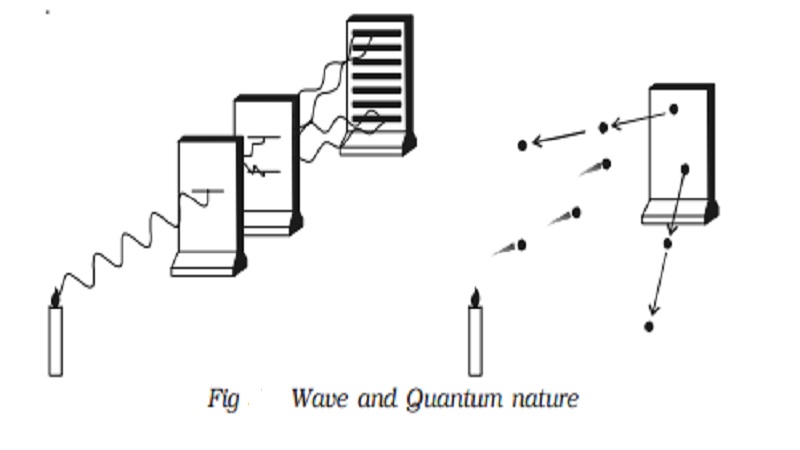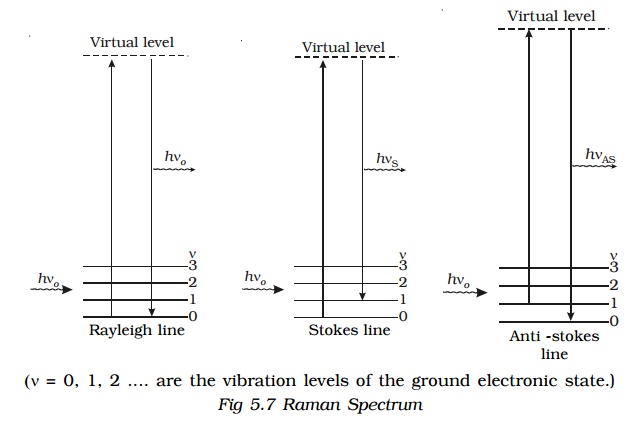Chapter: physics 11th 12th standard school college definition answer assignment examination viva question
Theories of light : Corpuscular theory, Wave theory, Electromagnetic theory, Quantum theory

Theories of light
Any theory regarding propagation of light must explain the properties of light. Since, light is a form of energy, it is transferred from one place to another. Light does not require a material medium for its propagation.
In general, there are two possible modes of propagation of energy from one place to another (i) by stream of material particles moving with a finite velocity (ii) by wave motion, wherein the matter through which the wave propagates does not move along the direction of the wave. The various theories of light put forward by famous physicists are given below.
1. Corpuscular theory
According to Newton, a source of light or a luminous body continuously emits tiny, massless (negligibly small mass) and perfectly elastic particles called corpuscles. They travel in straight lines in a homogeneous medium in all directions with the speed of light.
The corpuscles are so small that a luminous body does not suffer any appreciable loss of mass even if it emits light for a long time.
Light energy is the kinetic energy of the corpuscles. The sense of vision is produced, when the corpuscles impinge on the retina of the eye. The sensation of different colours was due to different sizes of the corpuscles. On account of high speed, they are unaffected by the force of gravity and their path is a straight line. When the corpuscles approach a surface between two media, they are either attracted or repelled. Reflection of the particles is due to repulsion and refraction is due to attraction.
According to this theory, the velocity of light in the denser medium is greater than the velocity of light in rarer medium. But the experimental results of Foucault and Michelson showed that velocity of light in a denser medium is lesser than that in a rarer medium. Further, this theory could not explain the phenomena of interference, diffraction and polarisation.
2. Wave theory
According to Huygens, light is propagated in the form of waves, through a continuous medium. Huygens assumed the existence of an invisible, elastic medium called ether, which pervades all space. The disturbance from the source is propagated in the form of waves through space and the energy is distributed equally in all directions. Huygens assumed these waves to be longitudinal. Initially rectilinear propagation of light could not be explained. But the difficulty was overcome when Fresnel and Young suggested that light waves are transverse. The wave theory could satisfactorily explain all the basic properties, which were earlier proved by corpuscular theory and in addition, it explains the phenomena of interference, diffraction and polarisation.
According to Huygens, the velocity of light in a denser medium is lesser than that in a rarer medium. This is in accordance with the experimental result of Foucault.
3. Electromagnetic theory
Maxwell showed that light was an electromagnetic wave, conveying electromagnetic energy and not mechanical energy as believed by Huygens, Fresnel and others. He showed that the variation of electric and magnetic intensities had precisely the same characteristics as a transverse wave motion. He also showed that no medium was necessary for the propagation of electromagnetic waves.
4. Quantum theory
The electromagnetic theory, however failed to account for the phenomenon of photo electric effect. In 1900, Planck had suggested that energy was emitted and absorbed, not continuously but in multiples of discrete pockets of energy called Quantum which could not be subdivided into smaller parts. In 1905, Einstein extended this idea and suggested that light waves consist of small pockets of energy called

photons. The energy associated with each photon is E = hν , where h is Planck’s constant (h = 6.626 x 10-34 J s) and ν is the frequency of the electromagnetic radiation.
It is now established that photon seems to have a dual character. It behaves as particles in the region of higher energy and as waves in the region of lower energy (Fig. 5.6).
Related Topics